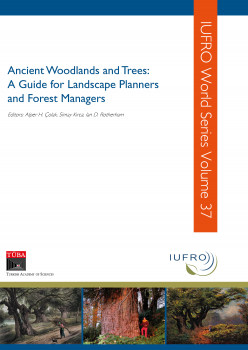The ancient woodland concept as a practical conservation tool: the Turkish experience

The ancient woodland concept as a practical conservation tool: the Turkish experience
Why ancient woodlands and wood species restoration and rehabilitation is necessary? In Turkey there are over 500 taxa of trees and shrubs, however only a few of them play a vital role both naturally and culturally. The technical term here is ‘intergenerational equity’, or in plainer language, not messing things up for our children and grandchildren. In ancient woodland restoration and rehabilitation approach in Turkey, there is no lack of knowledge to implement suitable strategies, however what is more often lacking is an understanding of the overall landscape and the factors that determine whether different land-uses are mutually reinforcing or in conflict. These applications need to accommodate new perspectives and ideas to put ancient woods back into the natural and cultural landscapes. The experience gained indicates that such implementations require supportive local and national policy frameworks and a strong constituency of local-level support. As a country with already significant areas of a highly degraded nature, but also containing diverse natural and cultural landscapes, Turkey should apply suitable techniques to bring these ancient woods back into their original landscapes in order to sustain its cultural and natural heritage. Ascertaining, and then maintaining, the condition of ancient woodland in Turkey like in UK will be a major challenge for the future.
Turkey contains ancient cultural landscapes with distinctive ancient wood and ancient woodlands. They are strongly influenced by human activity reaching back far into history. This is very obvious in Anatolia, a region where eastern and western civilizations meet. The region has also been recognized by eastern and western civilizations nearly as a ‘tree paradise’ with its diverse tree species adapted to different climatic and geomorphological conditions. In this context, it has been aimed to; (1) emphasize the interaction between cultural features and diverse forest landscapes with ancient woodlands, (2) introduce the understanding of ancient woodland concept in Turkey, (3) determine the typical prominent ancient woodland taxa, (4) represent some techniques in order to restore degraded ancient woodland ecosystems in Turkey and (5) seek opportunities for the planning of undisturbed ancient landscapes as a cultural heritage.
Additionally, the importance of developing strategies in order to prevent the loss of ancient woodlands was tried to be illustrated by two case studies on Common yew (Taxus baccata L.) and Common boxwood (Buxus sempervirens L.), which have been continuosly present in Anatolia since thousands of years, became an important component of cultural landscapes, however strongly influenced by human activity resulting with the degardation and loss of their habitats.
